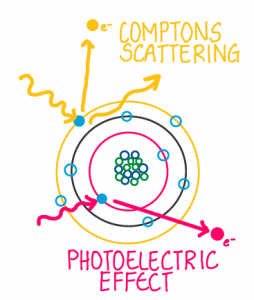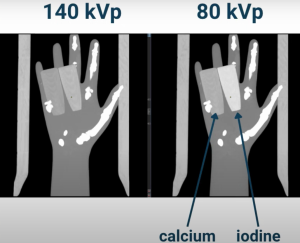Introduction:
Globally, around 80% of kidney stones are a combination of calcium with phosphate or oxalate. Uric acid stones constitute about 9%, struvite stones 10%, and cystine-containing stones approximately 1% of all kidney stones.
Differentiating tissues on computed tomography (CT) can be challenging due to overlapping linear attenuation coefficients (µ) at a specific x-ray energy, which depend on material composition, mass density, and photon energies.
Basic Principle of Material Differentiation in DECT:
The attenuation of x-rays by a material depends on its atomic number (Z) and the energy of the x-ray photons. Lower-energy photons are more affected by the photoelectric effect, which increases with higher Z materials, while higher-energy photons are more influenced by Compton scattering.

By acquiring data at two energy levels, DECT measures how a material's attenuation changes with energy, creating a specific attenuation ratio unique to each material.
Dual energy CT (DECT), uses distinct energy spectra to differentiate materials that may have the same attenuation at specific energies (e.g., calcium and iodine at 100 keV) but differ in their attenuation curves.
Why dual energy is necessary for calculi characterization?
Low-Energy:
- Amplify differences in attenuation for materials with higher Z, such as iodine or calcium.
- Highlight calcium-rich stones more than uric acid stones.
High-Energy:
- Normalize attenuation values and reduce overlap between materials like uric acid and calcium oxalate.
- Minimize beam hardening and streak artifacts from dense stones or adjacent bony structures.

AIM: The study aimed to assess the accuracy of Dual-Energy Computed Tomography (DECT) in determining the composition of renal calculi and compare it with biochemical analysis, the gold standard.
OBJECTIVE: To determine the accuracy of DECT in evaluating the composition of renal calculi.
INCLUSION CRITERIA: All patients referred for CT scan for evaluation of urinary calculi to Bharati Vidyapeeth Medical College and Hospital, a tertiary care hospital in Pune.

EXCLUSION CRITERIA:
- Contraindication to CT eg: pregnancy.
- Stones < 5 mm.
- Patients who did not undergo surgery.